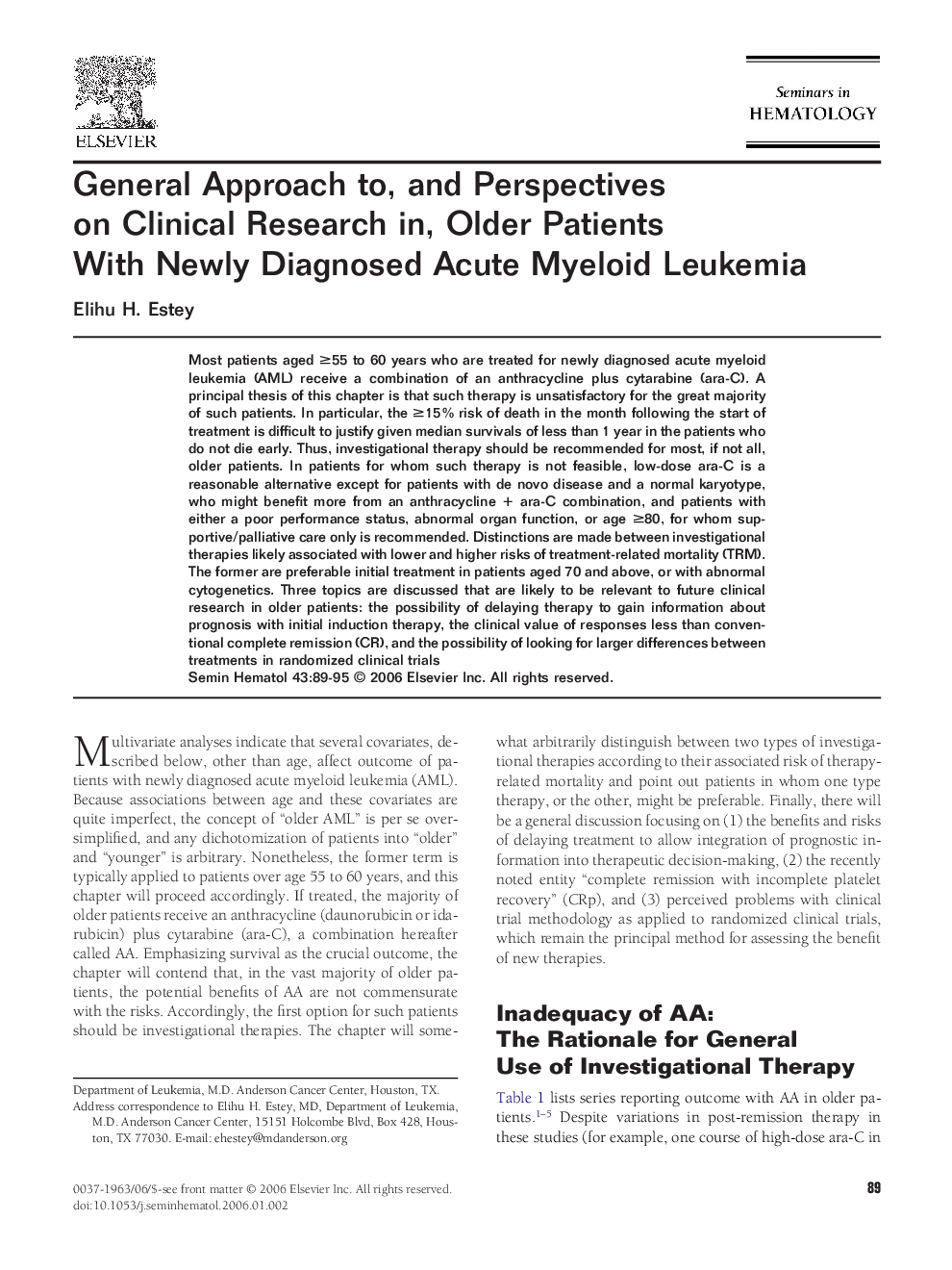| Article ID | Journal | Published Year | Pages | File Type |
|---|---|---|---|---|
| 3334140 | Seminars in Hematology | 2006 | 7 Pages |
Most patients aged ≥55 to 60 years who are treated for newly diagnosed acute myeloid leukemia (AML) receive a combination of an anthracycline plus cytarabine (ara-C). A principal thesis of this chapter is that such therapy is unsatisfactory for the great majority of such patients. In particular, the ≥15% risk of death in the month following the start of treatment is difficult to justify given median survivals of less than 1 year in the patients who do not die early. Thus, investigational therapy should be recommended for most, if not all, older patients. In patients for whom such therapy is not feasible, low-dose ara-C is a reasonable alternative except for patients with de novo disease and a normal karyotype, who might benefit more from an anthracycline + ara-C combination, and patients with either a poor performance status, abnormal organ function, or age ≥80, for whom supportive/palliative care only is recommended. Distinctions are made between investigational therapies likely associated with lower and higher risks of treatment-related mortality (TRM). The former are preferable initial treatment in patients aged 70 and above, or with abnormal cytogenetics. Three topics are discussed that are likely to be relevant to future clinical research in older patients: the possibility of delaying therapy to gain information about prognosis with initial induction therapy, the clinical value of responses less than conventional complete remission (CR), and the possibility of looking for larger differences between treatments in randomized clinical trials
